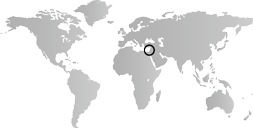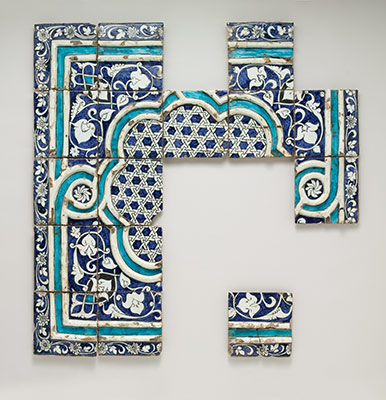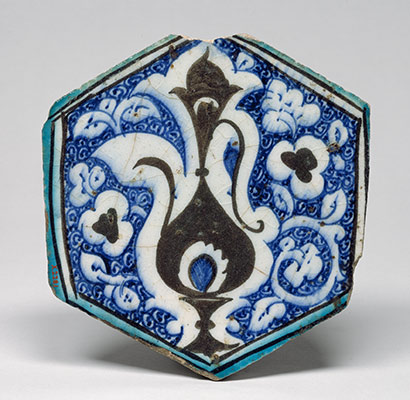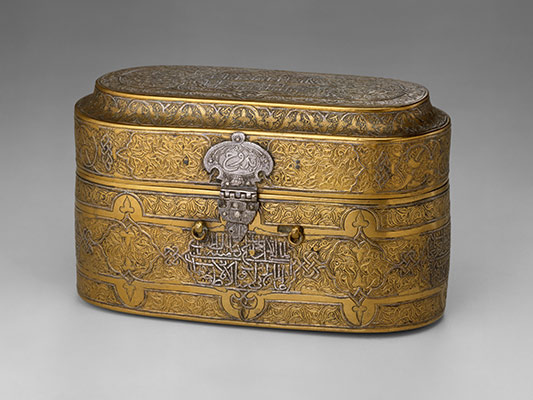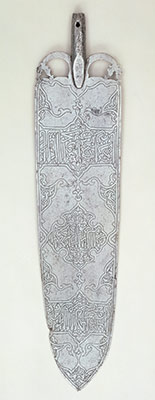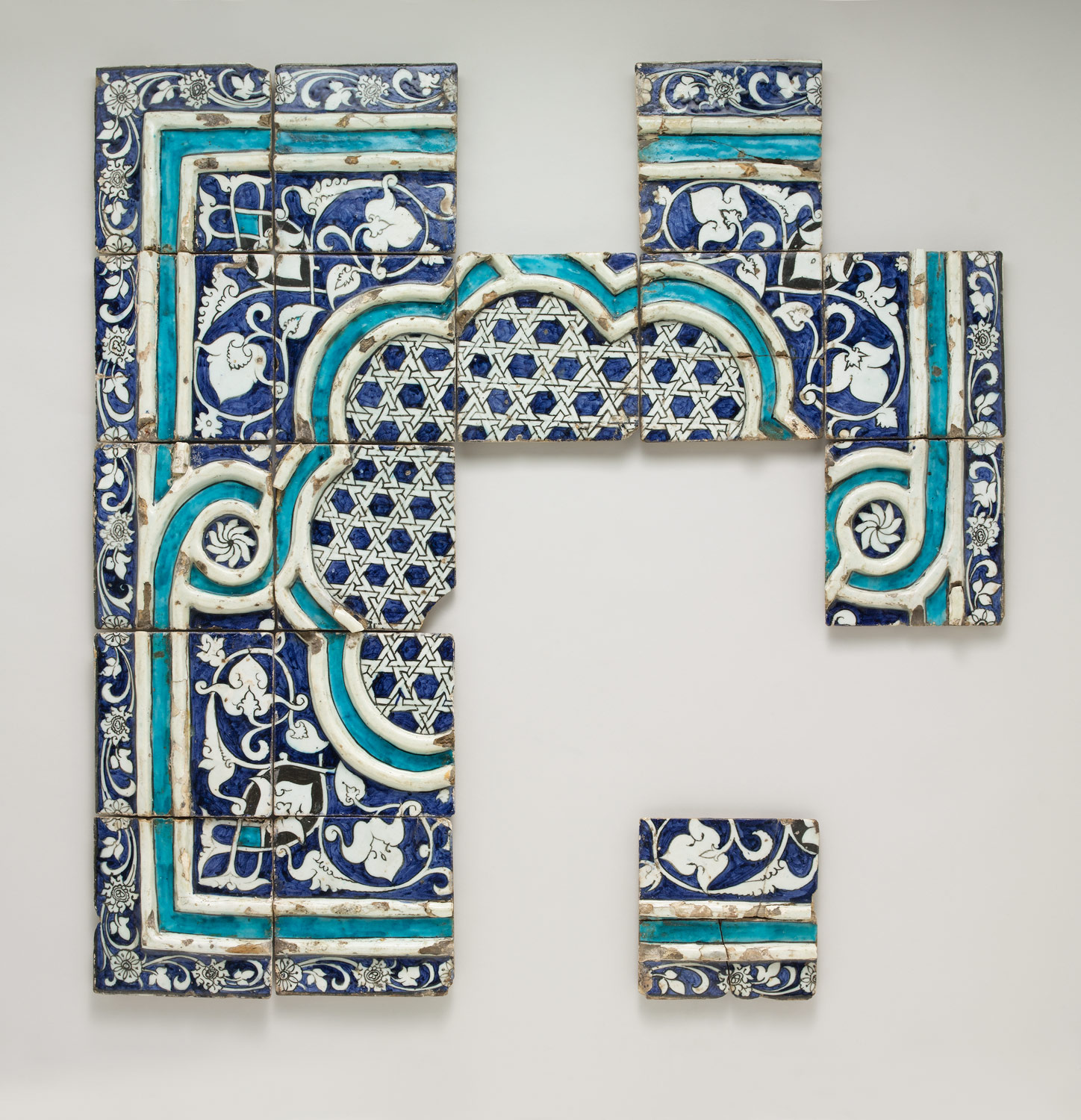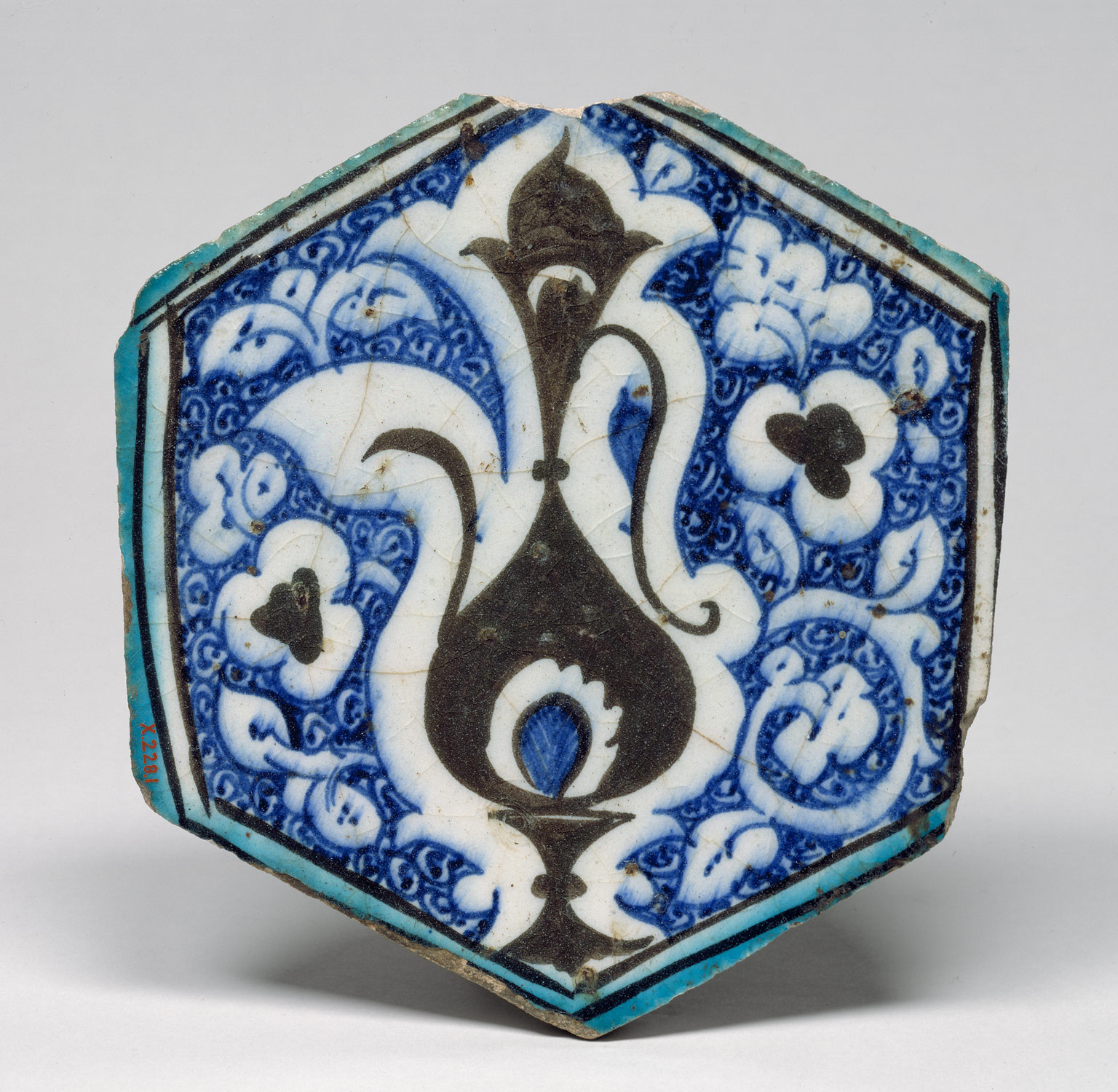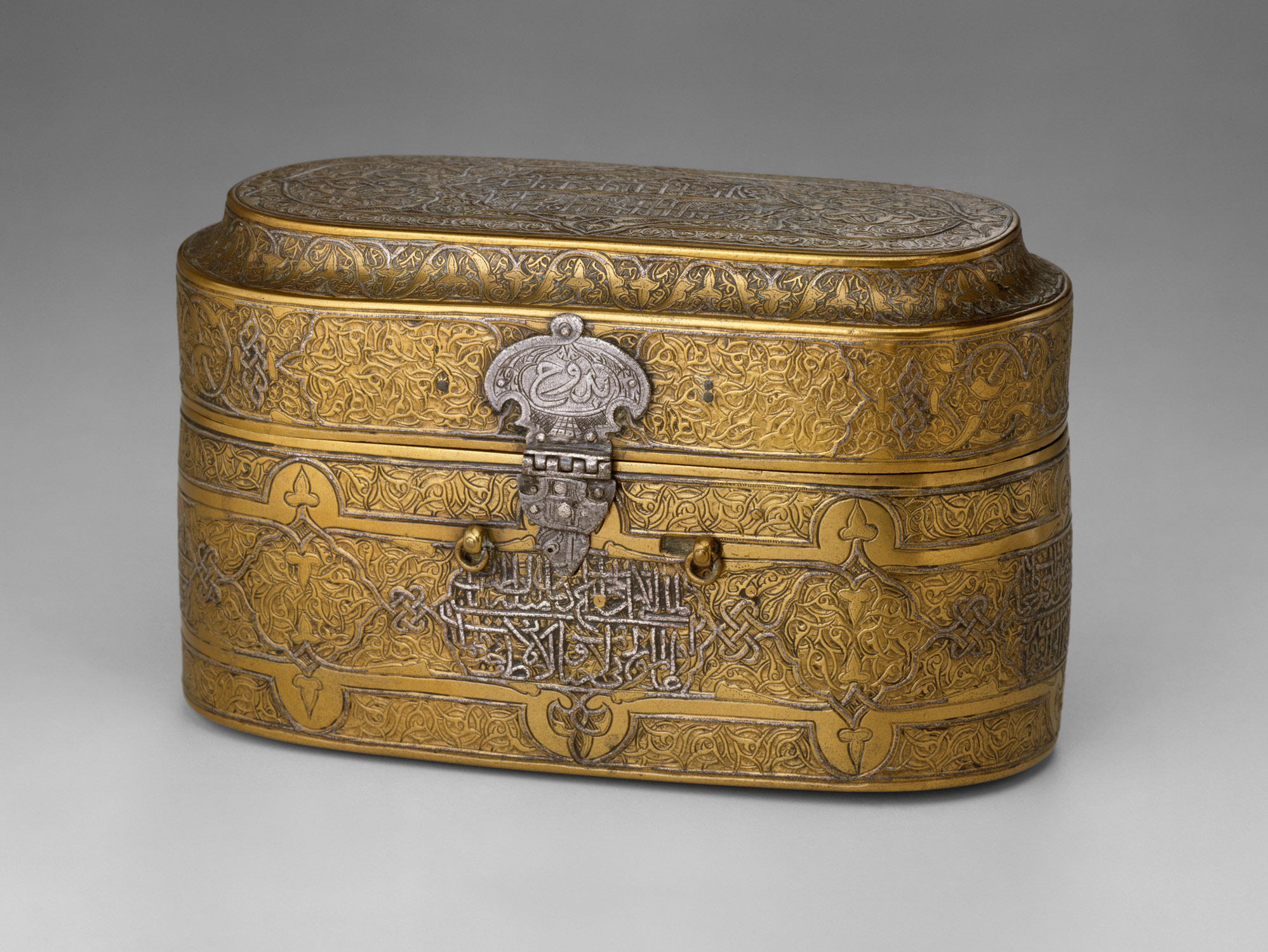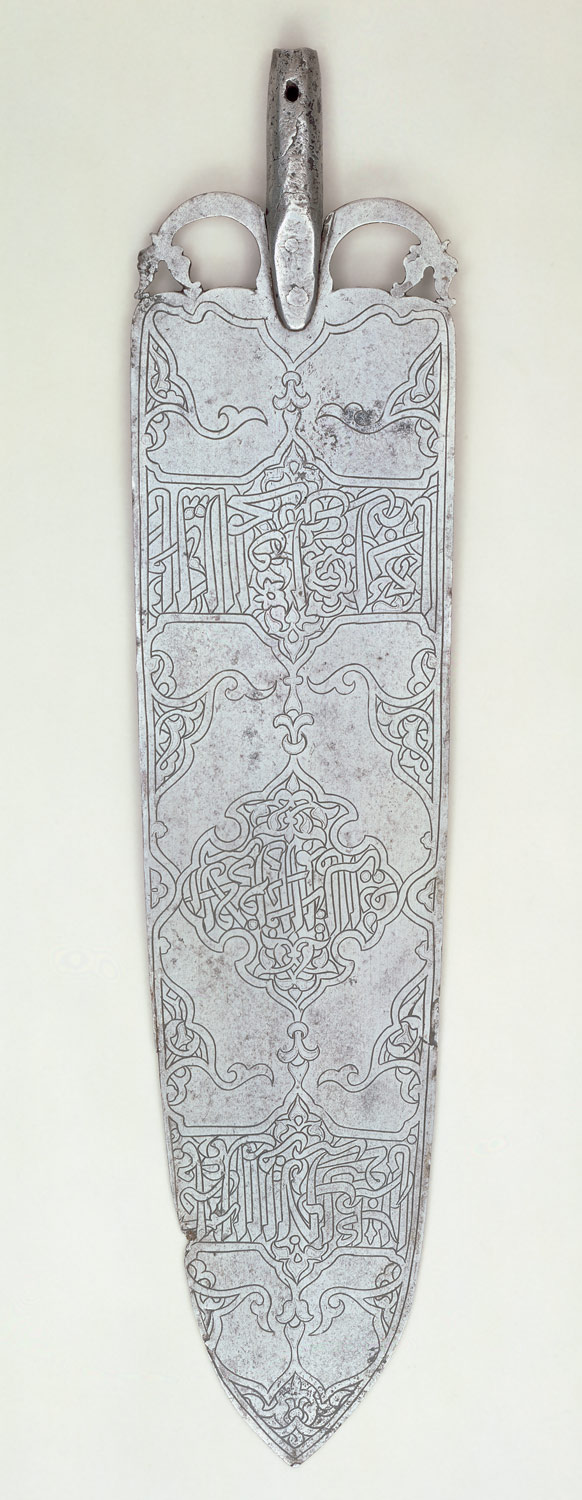In the early part of the period from 1400 to 1600 A.D., the Central Asian conqueror Timur (Tamerlane; r. 1370–1405) threatens Mamluk rule in the Eastern Mediterranean. Though the arts initially suffer from the political turmoil, they revive with increased trade and economic activity. In the sixteenth century, the region becomes part of the Ottoman realm and benefits from incorporation into a world empire.
The Eastern Mediterranean, 1400–1600 A.D.
Timeline
1400 A.D.
1450 A.D.
1450 A.D.
1500 A.D.
1500 A.D.
1550 A.D.
1550 A.D.
1600 A.D.
Overview
Key Events
-
1382–1516
In the Mamluk sultanate, the Burji line of sultans, drawn from a military elite of professional slave soldiers of primarily Circassian origin, is in power. The Mamluk realm continues to benefit from the east-west trade of silks and spices. The arts, including enameled glass, inlaid metalwork, woodwork, and textiles, continue to flourish, and various religious and public monuments are built.
-
ca. 1400–1401
The armies of Timur (Tamerlane; r. 1370–1405) devastate Syria, burning the cities of Aleppo and Damascus and destroying many important buildings. The arts suffer as Timur carries off the best artists to his capital in Samarqand.
-
1400–1516
After the damage by Timur, economic and artistic activity revives in the first half of the fifteenth century. Late Mamluk art in the eastern Mediterranean follows earlier models, and architectural patronage focuses on public and pious foundations. Aleppo and Damascus are important for Mamluk commissions and building projects. Both cities gain from the lucrative textile trade from Iran to Europe (via Venice). Stone warehouses such as the Khan al-Qadi (1441) are erected and new suburbs develop along caravan routes. The architecture of the period is recognizable for its colorful facades and polygonal minarets. Notable buildings include the mosques of Aqbugha al-Utrush (Aleppo, 1399—1410) and Sabun (Damascus, 1464) as well as the Madrasa Jaqmaqiyya (Damascus, 1421).
-
1468–1496
During the reign of Qaitbay, the greatest of later Mamluk sultans, the cities of the eastern Mediterranean are important for artistic and architectural patronage. Notable commissions include the refortification of Aleppo as well as the Madrasa Ashrafiyya (1480–82) and the monumental fountain on the Haram al-Sharif (1482) in Jerusalem.
-
1501–1517
Despite the critical financial situation of the state, the last Mamluk sultan, Qansuh al-Ghawri, is an active patron of the arts.
-
1516–1517
Ottoman armies under Selim (“the Grim,” r. 1512–20) conquer Syria and Egypt, bringing an end to the Mamluk sultanate. Under Ottoman rule, architecture and the arts at first continue in the style set by the Mamluks, reflecting Ottoman admiration for the work of their predecessors. Sultan Selim initiates Ottoman building activity with his Selimiye hospice in Damascus. Successive Ottoman governors continue architectural patronage. With time, imperial Ottoman elements are integrated into the local vocabulary. Congregational mosques follow Istanbul models, with hemispherical domes, slender pencil-shaped minarets, and enclosed courts with domed porticoes, but also incorporate local features such as striped masonry.
-
1516–1918
Under the Ottomans, Damascus remains a provincial capital, but also benefits from becoming part of a world empire. The east-west trade gains prominence with the recognition of trading privileges for European merchants. Also significant for the economy is the commercial activity brought by yearly pilgrimage caravans that pass through Damascus en route to the Holy Cities of Islam. The eastern Mediterranean is recognized for its religious and legal institutions of higher learning.
-
1520–1566
During the reign of Sultan Süleyman, popularly known as “the Magnificent” or “the Lawmaker,” Sinan, the renowned chief of the Corps of Royal Architects, designs the Süleymaniye Mosque Complex in Damascus (completed 1554–5). While the plan of this complex follows an Istanbul model, the methods and materials point to a local interpretation. Süleyman’s patronage in the eastern Mediterranean also includes the restoration of the Dome of the Rock in Jerusalem and the replacement of the exterior mosaic with a tile revetment. The region becomes known for its ceramic production, which emulates Iznik ware.
-
1566–1600
In the post-Süleyman period, significant architectural commissions in Damascus include the mosques of Dervish (or Darwish) Pasha (1574) and Sinan Pasha (1591), which include such dependencies as schools, baths, soup kitchens, and often tombs for their founders.
-
1573
The Ottomans conquer Cyprus and secure their control over the eastern Mediterranean.
Citation
“The Eastern Mediterranean, 1400–1600 A.D.” In Heilbrunn Timeline of Art History. New York: The Metropolitan Museum of Art, 2000–. http://www.metmuseum.org/toah/ht/?period=08®ion=wae (October 2002)
Related
Map
